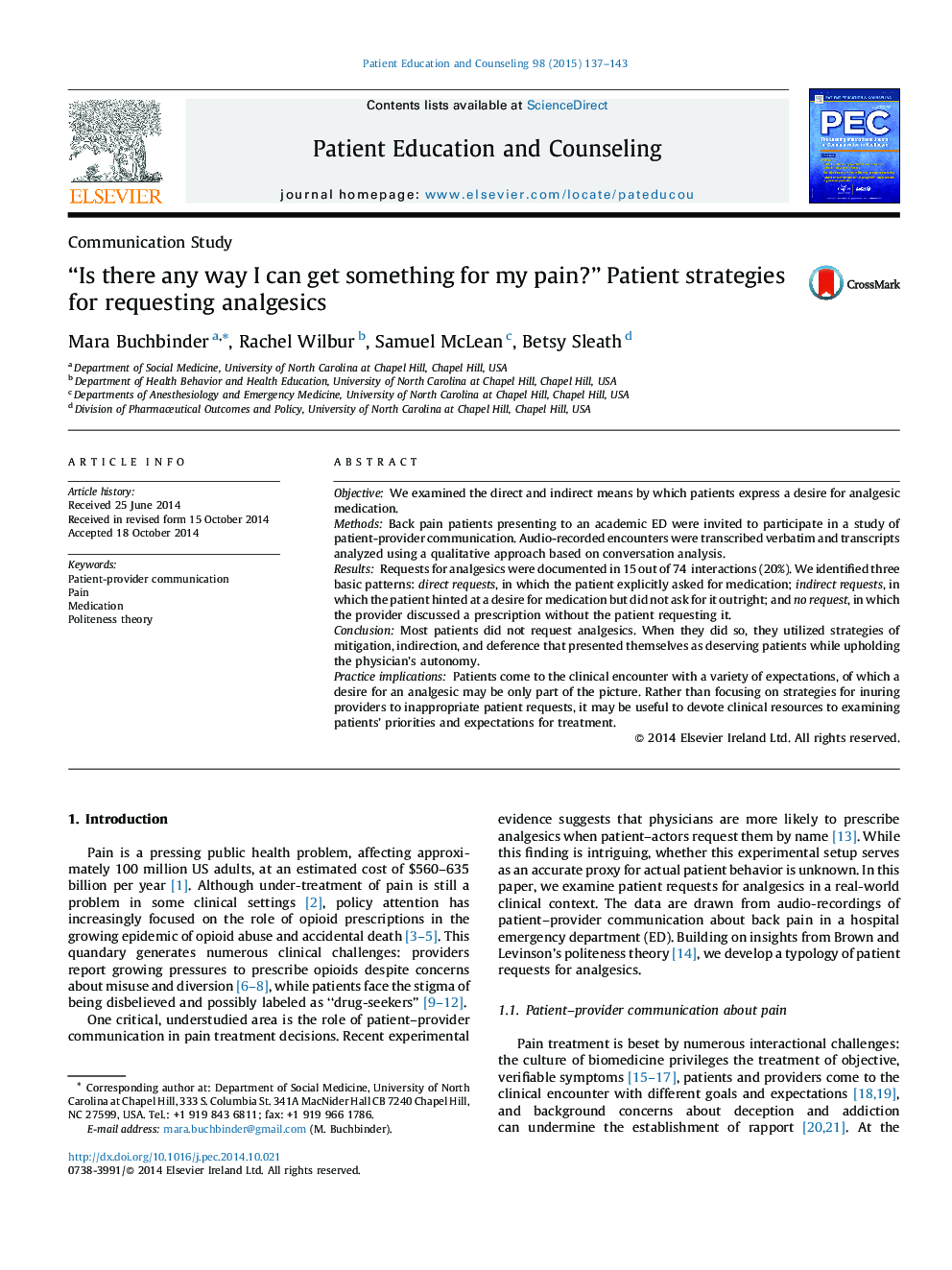| Article ID | Journal | Published Year | Pages | File Type |
|---|---|---|---|---|
| 6153688 | Patient Education and Counseling | 2015 | 7 Pages |
â¢Patient-provider communication about pain is challenging yet understudied.â¢We examine how patients ask for pain medications in a real-world clinical context.â¢We audio-recorded clinical conversations in an academic emergency department (ED).â¢Contrary to ideas about “drug-seekers,” most patients did not request analgesics.â¢When they did request pain medications, they did so indirectly and deferentially.
ObjectiveWe examined the direct and indirect means by which patients express a desire for analgesic medication.MethodsBack pain patients presenting to an academic ED were invited to participate in a study of patient-provider communication. Audio-recorded encounters were transcribed verbatim and transcripts analyzed using a qualitative approach based on conversation analysis.ResultsRequests for analgesics were documented in 15 out of 74 interactions (20%). We identified three basic patterns: direct requests, in which the patient explicitly asked for medication; indirect requests, in which the patient hinted at a desire for medication but did not ask for it outright; and no request, in which the provider discussed a prescription without the patient requesting it.ConclusionMost patients did not request analgesics. When they did so, they utilized strategies of mitigation, indirection, and deference that presented themselves as deserving patients while upholding the physician's autonomy.Practice implicationsPatients come to the clinical encounter with a variety of expectations, of which a desire for an analgesic may be only part of the picture. Rather than focusing on strategies for inuring providers to inappropriate patient requests, it may be useful to devote clinical resources to examining patients' priorities and expectations for treatment.
